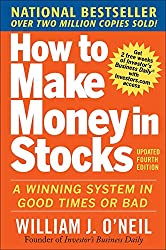When looking at fundamentals in MarketSmith, Earnings Stability is an indicator of the volatility of a companies earnings. If the volatility is low (e.g. into the single digits) you know a company has consistent earnings and you may choose to dig deeper to better understand if the earnings are consistently up, down or flat.
Cash flow is the net cash a company produces on a per-share basis. By comparing cash flow to EPS we can get a sense of the profitability of a company.
In my research to understand why cash flow is an important indicator of a companies profitability, I bumped into this: The Advantages of Reporting in Cash EPS. This quote sums it up nicely:
It is more difficult to manipulate the cash EPS because it is calculated with the company’s operating cash flow, which is how much the company made after operating expenses, debts and other deductions from income are subtracted.
Note: Cash flow is often referred to as cash EPS flow.
Contrast the above with an article from Investopedia: How to Evaluate the Quality of EPS:
It can be hard to decipher what a company’s earnings per share (EPS) report actually means. On top of that, management has a variety of ways in which they can potentially manipulate earnings per share numbers in their favor.
Comparing Cash Flow and EPS in MarketSmith
The above is about as far into the accounting principles as I care to go. What I am looking for is a guideline that can provide a glimpse into a companies profitability. Let’s look at an example.
The fundamentals for TDG are shown below. Pay attention the areas I’ve highlighted in red:
Given an Earnings Stability of less than 10, let’s look at the cash flow and EPS to gauge profitability.
Cash flow is $22.72 per share
Earnings per share for 2019 was $18.27
Given the cash flow is significantly higher than the earnings, we can be confident the company is very profitable.

